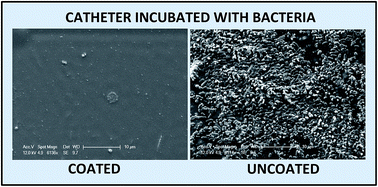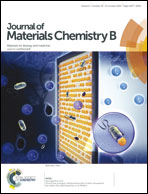Bacteria repelling poly(methylmethacrylate-co-dimethylacrylamide) coatings for biomedical devices†
Abstract
Nosocomial infections due to bacteria have serious implications on the health and recovery of patients in a variety of medical scenarios. Since bacterial contamination on medical devices contributes to the majority of nosocomical infections, there is a need for redesigning the surfaces of medical devices, such as catheters and tracheal tubes, to resist the binding of bacteria. In this work, polyurethanes and polyacrylates/acrylamides, which resist binding by the major bacterial pathogens underpinning implant-associated infections, were identified using high-throughput polymer microarrays. Subsequently, two ‘hit’ polymers, PA13 (poly(methylmethacrylate-co-dimethylacrylamide)) and PA515 (poly(methoxyethylmethacrylate-co-diethylaminoethylacrylate-co-methylmethacrylate)), were used to coat catheters and substantially shown to decrease binding of a variety of bacteria (including isolates from infected endotracheal tubes and heart valves from intensive care unit patients). Catheters coated with polymer PA13 showed up to 96% reduction in bacteria binding in comparison to uncoated catheters.


 Please wait while we load your content...
Please wait while we load your content...